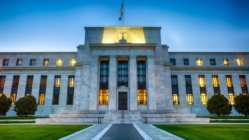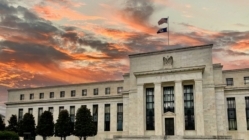
The Fed reduced the Fed Funds Rate by 1/4 percent and 30-year fixed rates are actually now slightly HIGHER.
I have blogged about this paradox many times b/c it is so confusing to borrowers and agents alike.
Many of our clients are in fact asking us if they can now get a 1/4 percent lower fixed rate b/c the Fed lowered the Fed funds rate by 1/4 percent, and we then have to explain that rates are actually a bit higher now.
There are several reasons why 30-year fixed rates often do not move in tandem with Fed rate cuts or rate increases. In December of 2017, for example, I wrote this blog about 30-year rates falling after the Fed increased the Fed Funds rate.
In any case, I am going to repeat much of what I have written in previous blogs b/c we are getting numerous questions about rates.
REASONS WHY FED RATE CUTS AND INCREASES DON’T ALWAYS AFFECT 30-YEAR RATES
- The “markets” anticipated the rate cut and already adjusted for it. Traders and investors analyze polls, data and Fed comments to very effectively anticipate changes and the Fed Funds rate and the markets often adjust long before the rate cuts take place. As a result, very little happens when the Fed Funds rate is actually cut (or increased).
- Short term rates don’t always affect long term rates: The Fed is only reducing the Fed Funds Rate, or the rate banks charge each other for overnight loans. This is a very short term rate, and short term rates don’t always affect long term (mortgage) rates.
- Many factors influence long term rates besides the Fed, and below are just a few.
A) Economic Data.
Negative economic news like increasing unemployment, decreasing job growth, slow GDP growth and weak retail sales will typically push rates down, as investors move from stocks to bonds in response to negative news. Conversely, positive news usually pushes rates up. Full-on recessions (a reduction in all major economic indicators over three to six months) usually bring rates down significantly.
B) Inflation.
Signs of looming inflation will push rates up. Investors want to make sure their returns exceed the rate of inflation. Weak inflation reports (or deflation signs) will push rates down.
C) Geopolitical crises.
Major economic crises or military confrontations (especially if they involve the U.S.) will usually push rates down, as investors move from stocks to the relative safety of bonds. A great example was the sovereign crisis in Greece several years ago when Greece threatened to default on its foreign debt obligations, as it held rates down for a long time. Another example was Russia’s invasion of Ukraine, as that too pushed rates down.
D) Supply and demand (of and for mortgages) play a role too.
Rates were held lower for a long time b/c the Fed artificially inflated demand for mortgage-backed securities by buying them by the billions. Currently, rates are probably a bit higher than they might be otherwise b/c so many borrowers want to refinance, allowing lenders with excess volume to push up rates. Excess demand for mortgage-backed securities pushes rates down, while excess demand for mortgages themselves can push rates up a bit. But either way, the supply and demand for mortgages and mortgage-backed securities definitely influences rates.
Jay Voorhees
Founder/Broker | JVM Lending
(855) 855-4491 | DRE# 01524255, NMLS# 310167
























